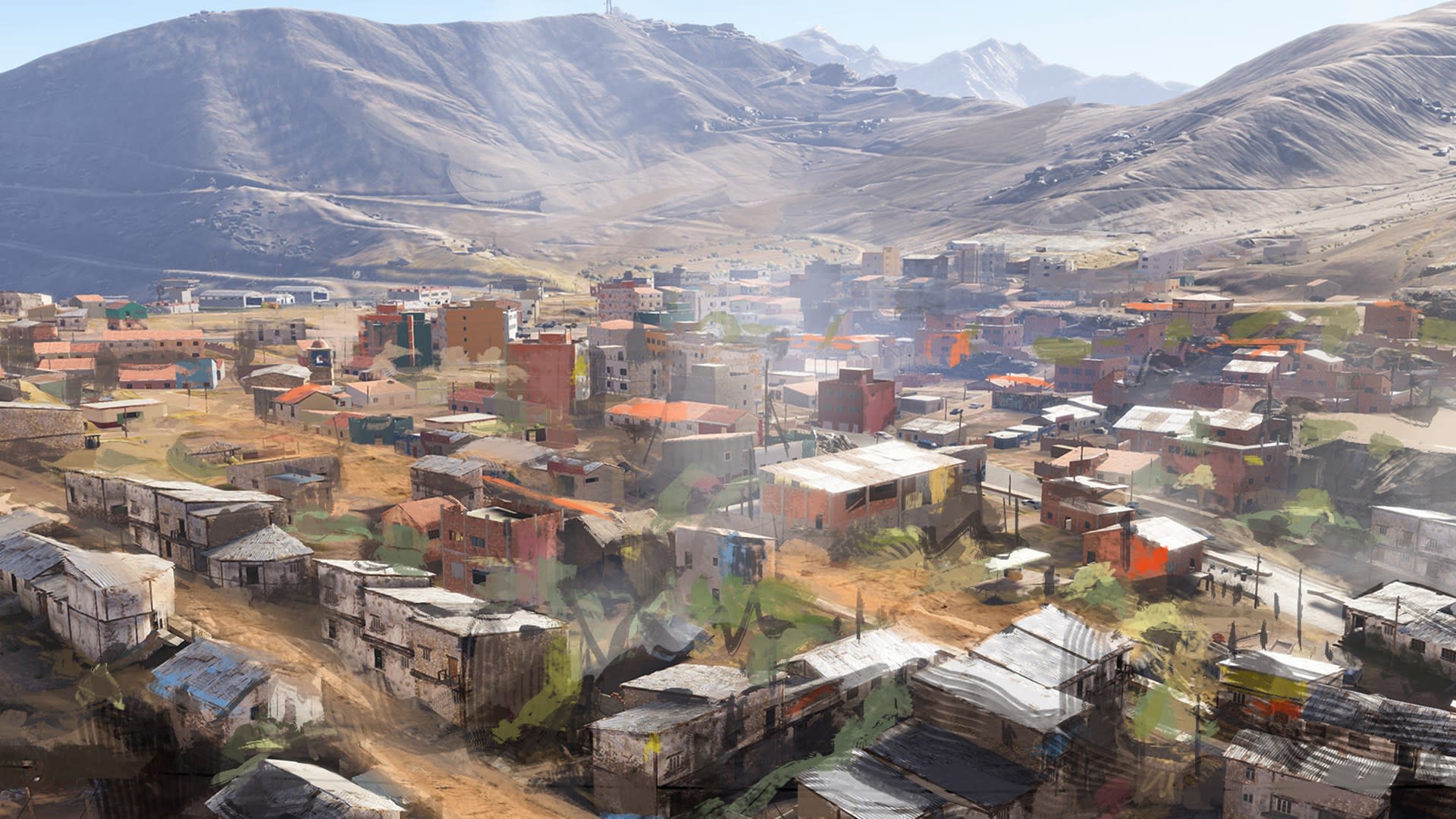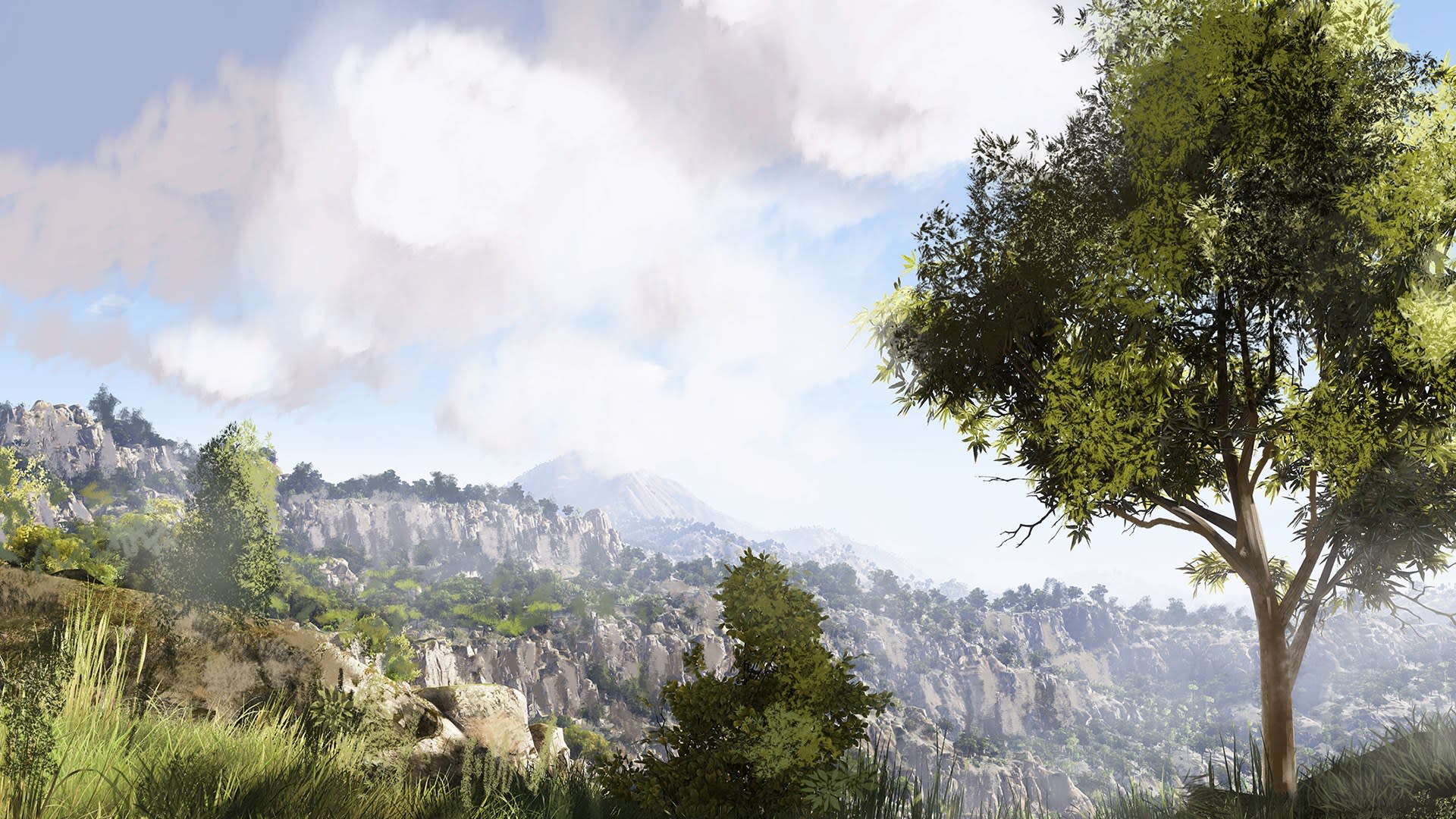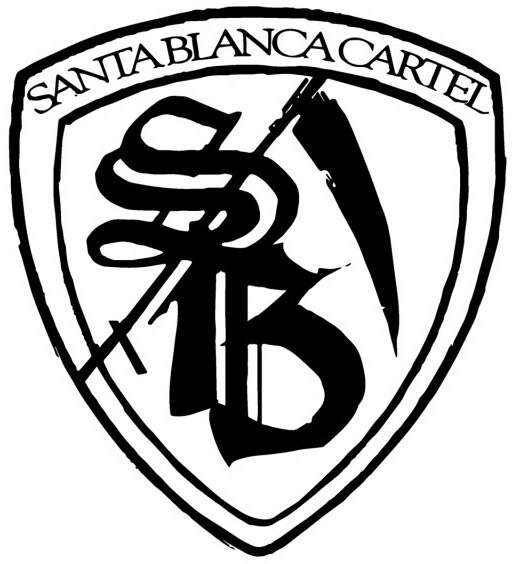What makes a video game’s virtual world believable to players? What aspects of the setting, population and mythology are most essential to achieving that goal? These are the questions that Eric Simon must answer in his role as a World Logic Designer at Ubisoft Paris. In this interview, he explains his work and talks about his part in creating the world of Ghost Recon: Wildlands.
“WORLD LOGIC DESIGNER” ISN’T NECESSARILY THE FIRST JOB THAT COMES TO MIND WHEN YOU THINK OF THE VIDEO GAME INDUSTRY. WHAT DOES IT ENTAIL?
ERIC SIMON It’s a job that has two aims in the development of a video game. The first is to build the world where the game takes place, and to design that universe. And the second is to ensure its consistency and internal logic. Obviously, not all games require this role. The world of Pac-Man is pretty limited, for example. But for open-world games, MMOs and RPGs, the world has to be consistent and well-designed. We help define the rules of the world the player will be exploring. You could even say that we help design the mythology of that world in a broader sense: what is its history, its myths, its population, their culture, and so on. Of course, the World Logic Designer isn’t some kind of Tolkien Jr. who gets to decide on all this from up in their ivory tower. It’s very much a collective, cross-cutting role, with contributions from all the different teams.
After earning a Geology degree, Eric Simon, 57, shifted his focus to tabletop role-playing games before entering the video game industry in the mid-1990s. He currently works at Ubisoft Paris as a World Logic Designer.
Likes: “Discovering and learning new things. I could spend days reading books or watching documentaries.”
Dislikes: "Wasting time. Time is a resource that becomes more and more rare over the years, so you really learn to value it.”
HOW DID THIS JOB COME TO BE? WHAT NEED DID IT FULFILL AT UBISOFT?
E. S. It became necessary as game worlds started getting bigger and bigger. Previously, work on the world was shared between artists, designers and developers. There wasn’t anyone in charge of centralizing all of it. But when MMOs and open worlds started to emerge and as they became more complex, there arose a need for this role. Players were starting to spend not just ten or so hours, but over a hundred hours in these virtual worlds, therefore it was important to ensure that they were interesting, varied, and that they stood up to close inspection.


THERE’S NO SPECIFIC TRAINING FOR THIS ROLE, EITHER. CAN YOU TELL US A BIT ABOUT YOUR CAREER PATH AND HOW YOU WOUND UP IN YOUR CURRENT POSITION?
E. S. I’ve had a long and winding career path. I started by studying Geology, which turned out to be quite useful when I’m working on the topography of our virtual worlds. But in 1987, a tabletop RPG company offered me a job as a designer. It was my great passion, and I stayed there until 1995. Then I switched over to the world of video games and worked at several different companies before landing at Ubisoft in 2008. I worked in various roles, but when it was decided that Ghost Recon: Wildlands would be an open world, the team realized that there would be a need for a World Logic Designer. And since that was very interesting to me, I volunteered, and the game directors entrusted me with this role.
ANCIENT, MYTHOLOGICAL AND MODERN WORLDS HAVE ALWAYS FASCINATED YOU. WHERE DID THAT PASSION COME FROM?
E. S. When I was a kid, my dad had a collection of big books in his library on the history of various civilizations. I spent a lot of time looking at the pictures, and I was fascinated with all the ancient worlds I discovered. It was like stepping through a magic portal into another universe. That passion never left me. Then when I started playing tabletop role-playing games, I quickly moved up from a player’s role to a game master’s role, creating my own stories and worlds. I still read a lot to this day. Right now, I’m reading an Aztec codex, a book that survived the Conquistador invasion. It’s a mixture of calendars and initiation stories set in the spirit world. It’s fascinating to get a glimpse of how the Aztecs saw reality and the underworld.
CREATING AN OPEN WORLD MEANS CREATING A WHOLE HISTORY, A MAP, A CULTURE AND A MYTHOLOGY. FOR A GAME LIKE GHOST RECON WILDLANDS, WHICH IS INSPIRED BY THE REAL WORLD, WHAT STEPS ARE INVOLVED IN THE DOCUMENTATION PHASE?
E. S. We had to draw from reality as much as possible, using authentic and unbiased information, and then go ahead and create our fictional world. Because Ghost Recon is a military fantasy game, I started my research at the US War College - an American army website where many researchers publish their work. At the time, they were talking about a new concept of hybrid war, involving multiple and multifaceted “enemies”. One example they mentioned was the Mexican cartels, which can destabilize entire countries. I continued my research along those lines by reading Army reports to the US Senate and reports from the UN, the CIA and the DEA. I also discovered the work of two French researchers: David Weinberger, who was looking at the Mexican cartels, and David Recondo, who was studying their religions. And alongside all that, I also did a lot of research on the cultures and geography of South America.

ONCE YOU’VE GATHERED ALL THAT INFORMATION, HOW DO YOU START LAYING THE FOUNDATION OF THE WORLD YOU’RE CREATING?
E. S. With all the information in place, we move on to the creation stage. We choose a core concept; a through-line that all the different interlocking elements of the game will center around. For Wildlands, that through-line was a world of South American traditions being invaded by a cartel. Starting from that core, I progressively added more and more layers: topography, ecosystems, human and agricultural activities like coca farming, industrial activities like oil and gas fields, urban networks, transportation networks, traces of history that are still present today, and so on. Then we have to name every location, every river, every mountain, and every city. That’s how we create different provinces with unique identities. Then we put ourselves in the mindset of the main enemy in the game, the cartel boss dominating this country, to see how he would exploit each region to achieve his goals. In one region, he sets up his labs, and in another he’s got a secret workshop to build mini submarines for transporting cocaine.
TELL US A BIT ABOUT YOUR COLLABORATION WITH THE DIFFERENT PRODUCTION TEAMS, WHICH CAN SOMETIMES INCLUDE HUNDREDS OF PEOPLE. HOW HARD IS IT TO ENSURE THAT THE WORLD MAINTAINS ITS CONSISTENCY AND LOGIC?
E. S. Once we’ve defined and documented the creative intentions, we have to communicate them to all the production teams and make sure everything’s cohesive. For example, the world builders and graphic artists had started working on the buildings that would populate the world. And I remember that one day, someone sent me references to create a bar. But it was a bar with more of a European feel than a South American one. So, I set up reference files for a hundred or so different types of key buildings so that everyone could have the correct references that fit with the original through-line.



ON THE OTHER HAND, VIDEO GAME WORLDS CAN’T BE COMPLETELY REALISTIC EITHER. THINGS HAVE TO HAPPEN TO KEEP THE PLAYER FROM GETTING BORED. HOW DO YOU FIND THE RIGHT BALANCE BETWEEN HAVING THE OPTION TO WALK AROUND AIMLESSLY AND FULFILLING THE PLAYER’S NEED FOR ACTIVITY AND EXCITEMENT?
E. S. It’s true, reality can sometimes be boring, and we might feel the urge to escape. That’s what video games are for, especially when they offer an open world that people can escape to and explore. And yes, in a shooter like Ghost Recon, it wouldn’t make sense for us to create a realistic simulation of being in the special forces. If we did, the player would spend a lot of time walking and hiding, and action would only be a very small part of their actual play time. There needs to be a logic that supports the fantasy and supports the player with activities to do. We need to find a balance between immersion, ensuring that the world is believable and immersive, and action, which is what the player is there for.
WHAT’S THE BIGGEST CHALLENGE IN YOUR WORK ON THESE OPEN WORLDS?
E. S. I’d say there are two main challenges. The first is staying one step ahead of the production chain, because there are hundreds of people relying on us for content and instructions. The second challenge is to create a world that’s fascinating and exciting enough, not only for players, but also for the developers and world builders. We need to be able to surprise the production teams so that they, in turn, can surprise our players. Our job is to create the skeleton of the world, but they’re the ones who flesh it out, give it its texture, and bring it to life.